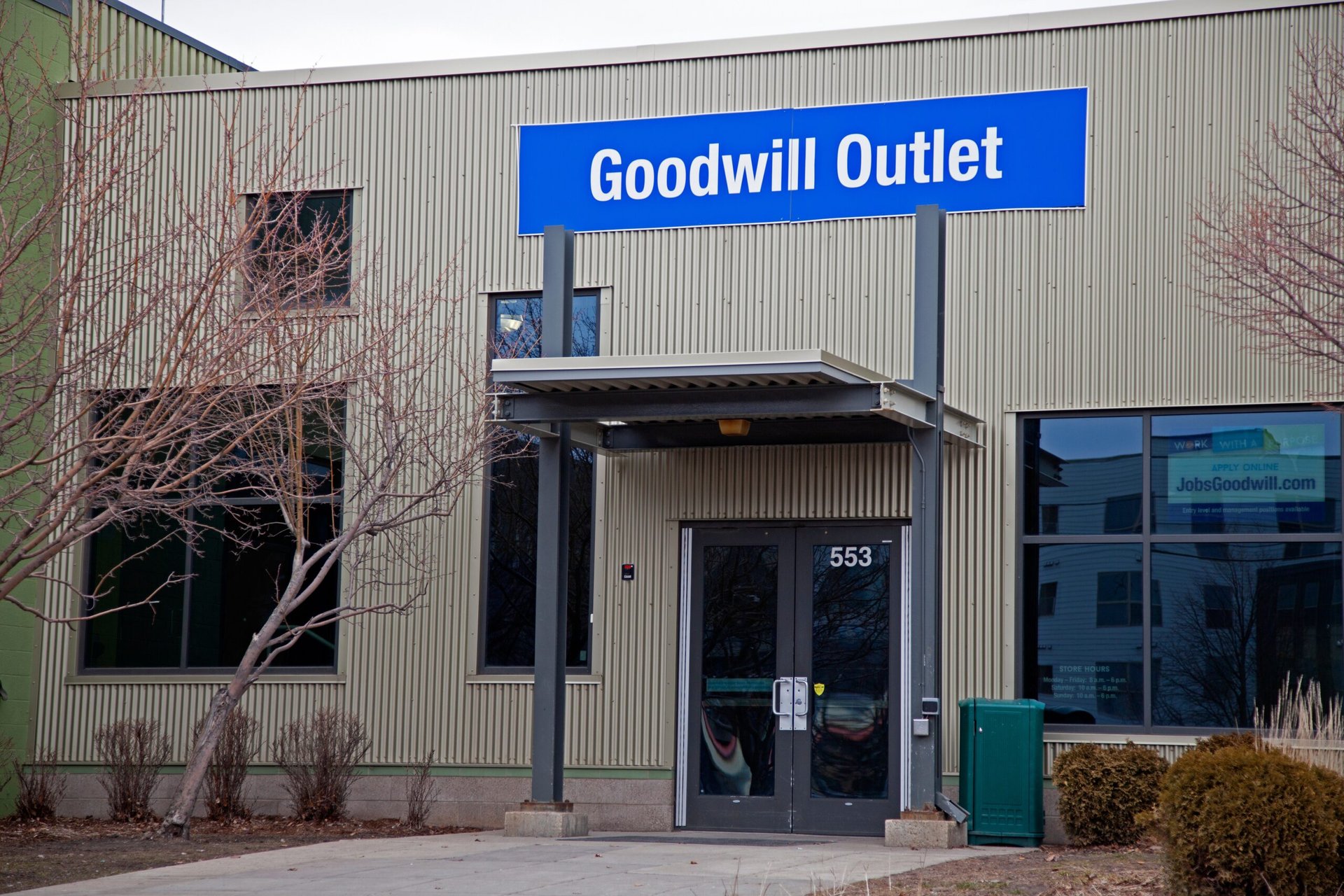
Imagine it: a thrift store where everything is on sale — a place where even bargain-basement prices aren’t quite low enough.
That place exists. It’s called the Goodwill Outlet.
Nicknamed “the bins” because a majority of items are simply dumped into giant rolling bins, Goodwill Outlet stores sell used merchandise by the pound. Shoppers fill their carts, and their selections are sorted and weighed at checkout.
Prices vary based on location and item type.
Though other thrift stores such as Salvation Army and St. Vincent de Paul have begun selling items by the pound, too, Goodwill was the original innovator (or binnovator?). Its outlet stores have been around long enough to coin a phrase now common in the thrift-shopping lexicon: “Let’s hit the bins!”
Not sure how to hit the bins near you? Look for any Goodwill store with the word “outlet” attached to its name. Chances are, most items there will be offered in bulk and by the pound.
Once you find a store, follow the tips below to get the most bang for your bin buck.
And for more thrift shopping tips, read my article “8 Secrets of an Expert Thrift Store Shopper.”
1. Arrive early
Serious bin shoppers are early birds. In my many excursions to Goodwill bins across Oregon and Washington state, I’ve noticed that lines start to form 20 to 30 minutes before the doors open.
Most folks use this time to chat, share their latest and greatest finds, and caffeinate for the Olympic-level thrift-shopping event that lies ahead. These informal gatherings are also the perfect place to find out about new outlet locations and other bargain hotspots.
2. Rise above the competition
“The bins” are part thrift store, part Thunderdome. Maybe it’s the thrill of discovery — let’s face it, people are literally digging — or the by-the-pound pricing. Whatever the reason, there’s an element of competition that doesn’t exist in traditional secondhand shops.
Many bin shoppers are professional pickers; they make their living by buying and reselling used items. Smartphones in hand, pickers can be spotted by their overflowing carts and their mad dash toward the shoe bins (a high-profit category).
Getting too competitive is one of many thrift-shopping mistakes. After all, who needs more stress? My advice: Take a friend, relax and have fun.
Even at thrift stores, some purchases just aren’t worth it. Read “25 Things You Should Never Buy — and What to Buy Instead.”
3. Know the rules
The bins have their own informal code of conduct. For those new to the scene, it’s important to follow two important rules:
- Yield to oncoming bins: Every bin is on wheels. When stock begins to run low, store employees wheel individual bins into and out of the area to replenish them. It’s crucial to stay out of their path. Avoid the clearly marked areas on the sales floor where the bins will eventually be parked. Stores take this rule seriously and will call out shoppers who don’t pay attention.
- Steer clear of covered carts: Some shoppers amass multiple cartloads of items in a single trip. Once a cart is full, it’s parked and covered with a blanket or sheet. This is a sign for other shoppers to stay away. No peeking. No pilfering.
4. Protect your hands and health
You know you’ve hit the thrift-shopping big leagues when protective equipment is required. On every trip to the bins, since before the COVID-19 pandemic, I bring a pair of form-fitting utility gloves with rubberized palms — the kind you might use for yard work — and a bottle of antibacterial hand sanitizer.
Trust me. After you’ve been elbow-deep in a few dozen bins, you realize gloves are essential. Besides acting as a basic germ barrier, they protect your hands from broken glass, protruding nails and other buried surprises.
When you’re finished shopping, shed the gloves and apply hand sanitizer — liberally.
5. Keep track of your stuff
A bad habit or nervous tick, I always play with my keys while shopping. But at the bins, I’ve learned to safely tuck away all personal items. Why? Because every bin is huge (about 6 feet by 4 feet) and filled to the brim with stuff. A set of misplaced keys, a wallet or a smartphone is likely to be gone forever.
6. Don’t hesitate
The bins aren’t made for procrastinators. Not sure if you really love that skirt? Put it in your cart anyway and keep going. Otherwise, it’ll be snagged by another shopper or permanently lost in the shifting tide of stuff.
When you’re done shopping, find a quiet corner to take stock of everything in your cart. Slowly filter the gems from the junk, then head for the checkout.
7. Grab singles
See something you like? Don’t hesitate to pick up singles. No, not those kinds of human singles … I’m talking about one glove, a lonely boot or an orphaned shoe.
Pairs often get separated at the bins. The mate to a boot you love might be in a bin on the other side of the store. If something catches your eye, grab it and keep your fingers crossed that you’ll find its match later.





Add a Comment
Our Policy: We welcome relevant and respectful comments in order to foster healthy and informative discussions. All other comments may be removed. Comments with links are automatically held for moderation.